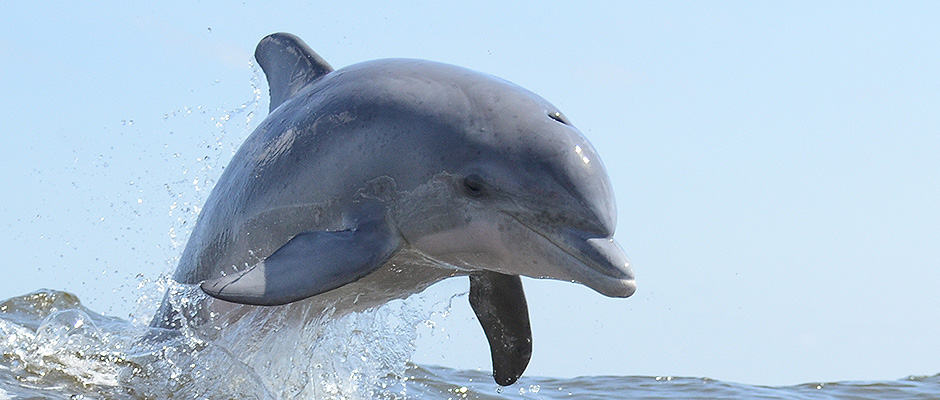Share this article
Novel Breathalyzer Monitors Dolphin Health
Determining the health status of marine mammals is tricky business. Biologists usually rely on blood, tissue, and fecal samples for guidance, but obtaining them can be arduous and invasive. Now, a new tool that collects cetacean breath—or blow—may provide deeper insights while make testing easier for both researchers and animals, according to a study published last month in Analytical Chemistry.
“This is the next frontier for researching marine mammal populations, to look at physiology in a non-invasive way,” said Elizabeth Burgess, a post-doctoral researcher at the New England Aquarium who studies whale blow but is not associated with the study. “It’s a complicated puzzle, and the more people we have working on it the better.”
Cristina Davis, a chemical sensing expert at the University of California, Davis, and her colleagues collaborated with researchers at the National Marine Mammal Foundation to develop a breathalyzer device for bottlenose dolphins (Tursiops truncatus). Tested on 21 managed dolphins in San Diego, Calif., and 21 wild dolphins temporarily captured in Sarasota, Fla., the Exhaled Breath Condensate (EBC) device—which resembles an oxygen mask—sits atop dolphin’s blowhole, collecting and condensing blow in a chilled chamber.
Using gas and liquid chromatography as well as mass spectrometry, the researchers identified approximately 500 metabolite compounds from the samples, including amino acids, lipids, chemicals responsible for dolphin breath’s fishy odor, pharmaceuticals, and water contaminants found in the dolphins’ habitats.
Previous cetacean breath studies have isolated DNA, microbes, and hormones. However, this is the first study to catalog all compounds in order to create baseline profiles of healthy animals, making metabolite variations indicative of stress, environmental exposure, or illness easier to detect. “The method of breath analysis may provide a very valuable tool in future wildlife conservation efforts as well as deepen our understanding of marine mammals’ biology and physiology,” writes Davis. She is currently analyzing dolphin blow samples collected over time to identify which compounds are associated with specific health conditions, such as pneumonia or morbillivirus, an infectious pathogen that has killed hundreds of dolphins along the U.S. Atlantic coast this year.
Meanwhile, other researchers are looking into adapting this method for other wildlife such as Weddell seals and humpback whales. “[Davis] is looking at everything, which is fantastic,” said Burgess. “We’re looking at [hormones] that can be found in whale blow, so this gives us an opportunity to see what other compounds there are and relate it to what we’re interested in.” Burgess and her team can detect the presence of hormones in blow, but quantifying them requires a measurable substance, which a growing library of compounds may provide.
Header Image: Image Credit: Juanma Carrillo, Flickr








